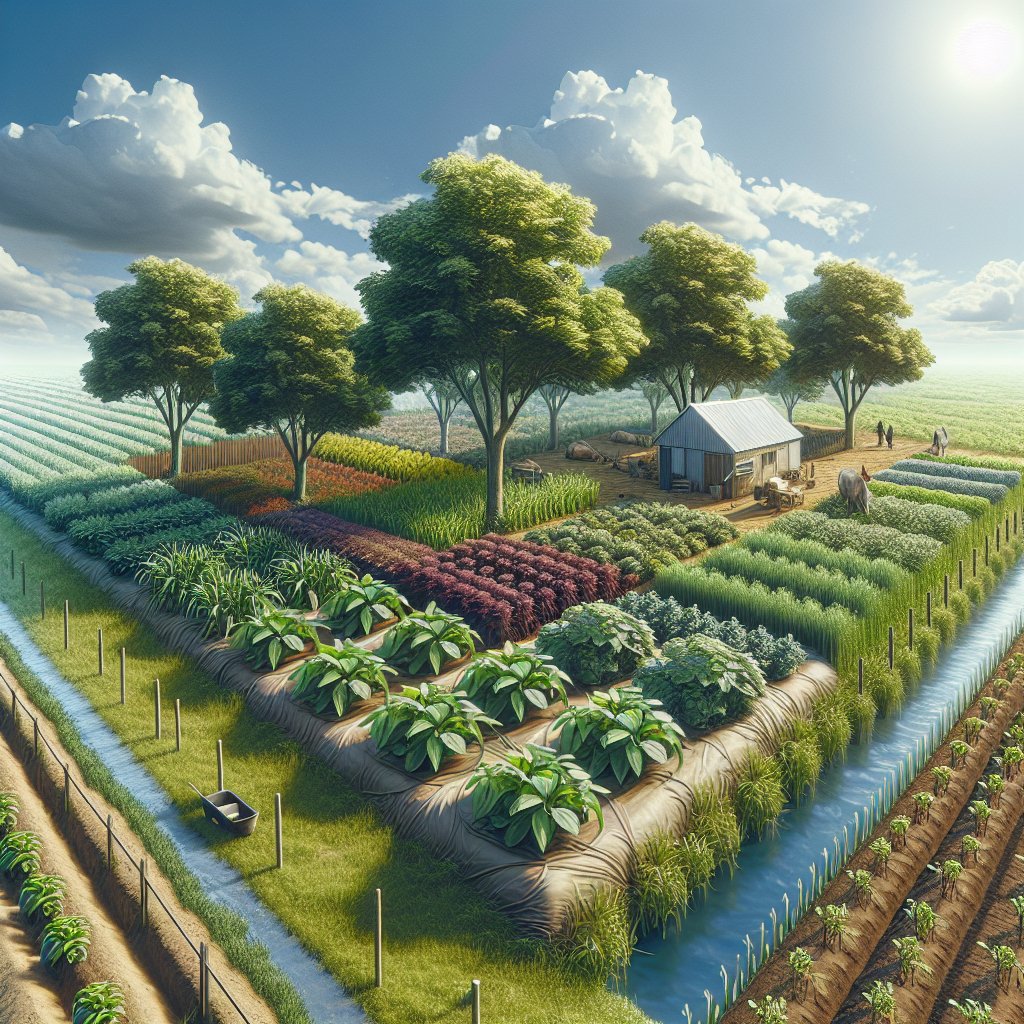Intercropping, the agricultural practice of growing two or more crops in proximity, offers numerous benefits for small farms. This method, which has been used for centuries, is gaining renewed attention as farmers seek sustainable and efficient ways to increase productivity and resilience. By diversifying crop production, small-scale farmers can optimize land use, improve soil health, and enhance biodiversity, all while reducing the risks associated with monoculture farming.
Understanding Intercropping
Intercropping involves the strategic planting of different crops in the same area, allowing them to grow together and complement each other. This practice can take various forms, such as mixed intercropping, where crops are grown together without distinct rows, or row intercropping, where crops are planted in alternating rows. The choice of intercropping system depends on factors such as crop compatibility, climate, soil type, and the specific goals of the farmer.
One of the primary advantages of intercropping is its ability to maximize the use of available resources. Different crops have varying nutrient requirements, root structures, and growth patterns, which means they can utilize sunlight, water, and soil nutrients more efficiently when grown together. For example, deep-rooted plants can access nutrients from deeper soil layers, while shallow-rooted plants make use of nutrients near the surface. This complementary use of resources can lead to higher overall yields compared to monoculture systems.
Moreover, intercropping can improve soil health by enhancing its structure and fertility. The presence of diverse root systems helps to prevent soil erosion, increase organic matter, and promote beneficial microbial activity. Leguminous crops, such as beans and peas, are particularly valuable in intercropping systems because they fix atmospheric nitrogen, enriching the soil and reducing the need for synthetic fertilizers.
Economic and Environmental Benefits
For small farms, intercropping offers significant economic advantages. By diversifying their crop production, farmers can reduce their reliance on a single crop and mitigate the risks associated with market fluctuations and crop failures. This diversification can lead to more stable income streams and improved food security for farming families.
Intercropping also contributes to pest and disease management. The presence of multiple crops can disrupt the life cycles of pests and reduce the spread of diseases, minimizing the need for chemical pesticides. Certain plant combinations can even repel pests or attract beneficial insects that prey on harmful species. This natural pest control not only reduces costs but also promotes a healthier ecosystem.
From an environmental perspective, intercropping supports biodiversity by creating habitats for various plant and animal species. This increased biodiversity can enhance ecosystem resilience, making it more adaptable to changes in climate and other environmental stresses. Additionally, intercropping can contribute to carbon sequestration, as diverse plant systems capture and store more carbon in the soil compared to monocultures.
Challenges and Considerations
While intercropping offers numerous benefits, it also presents certain challenges that farmers must consider. The complexity of managing multiple crops can require more knowledge and labor compared to traditional monoculture systems. Farmers need to carefully plan crop combinations, planting schedules, and harvest times to ensure compatibility and maximize benefits.
Additionally, intercropping may require adjustments in farm equipment and practices. For instance, machinery designed for monoculture may not be suitable for harvesting intercropped fields, necessitating manual labor or specialized equipment. Farmers must weigh these potential challenges against the benefits to determine if intercropping is a viable option for their specific circumstances.
Conclusion
Intercropping presents a promising opportunity for small farms to enhance productivity, sustainability, and resilience. By leveraging the natural synergies between different crops, farmers can optimize resource use, improve soil health, and reduce dependency on chemical inputs. While there are challenges to implementing intercropping systems, the potential economic and environmental benefits make it a worthwhile consideration for small-scale farmers seeking to thrive in an ever-changing agricultural landscape.



